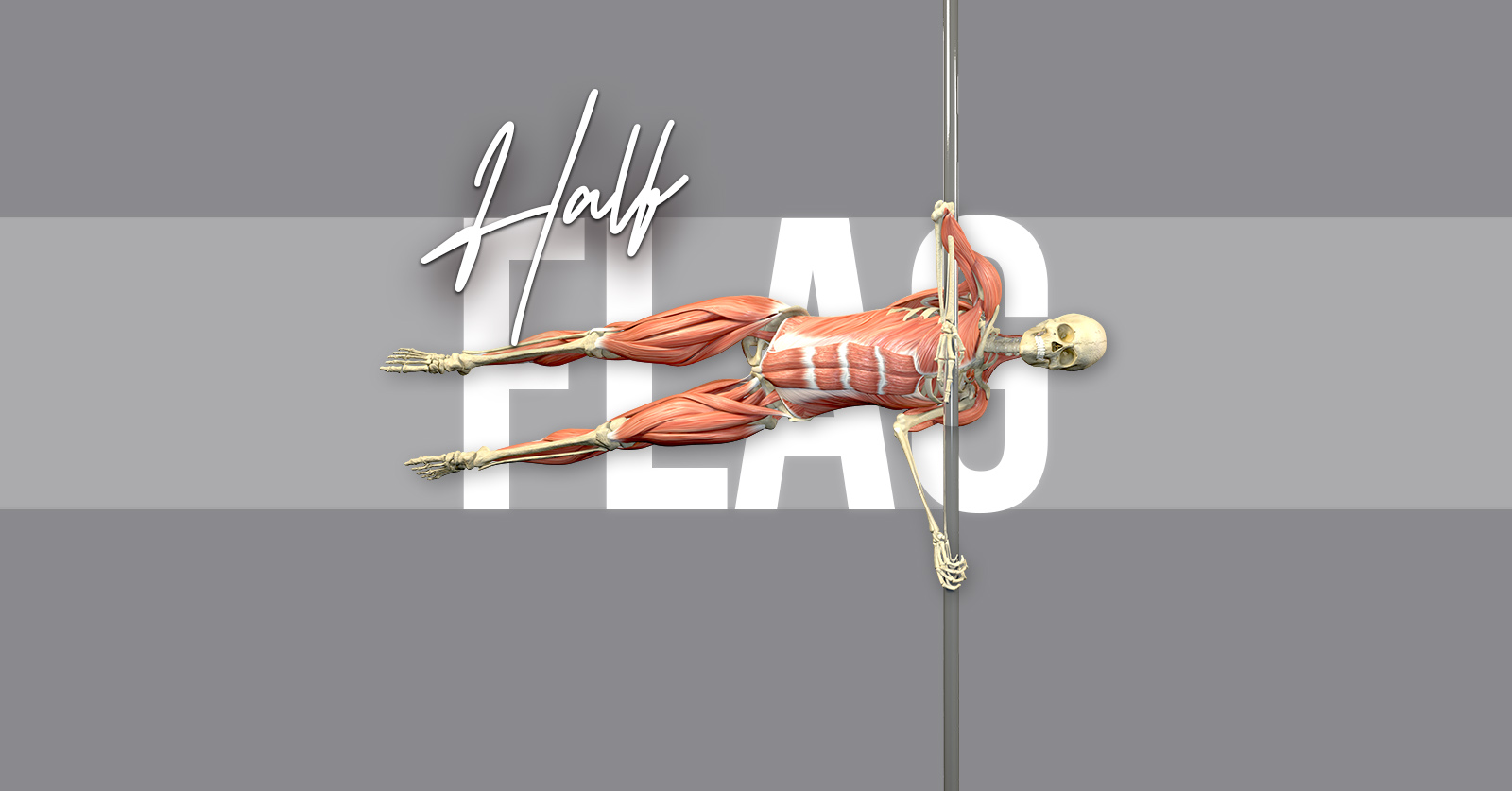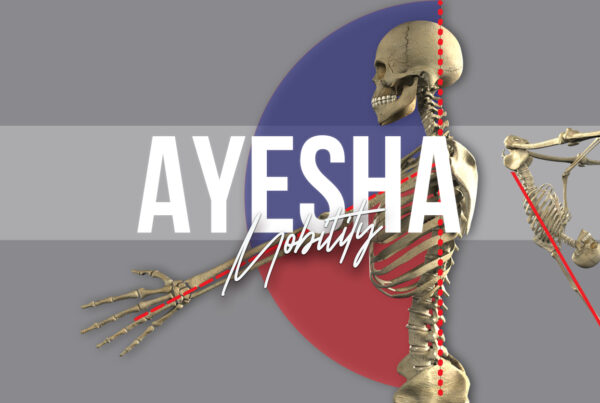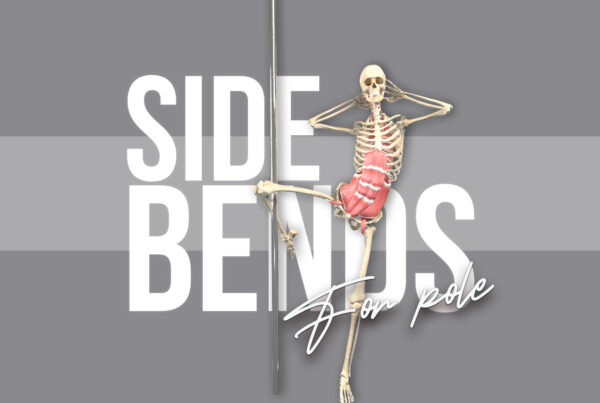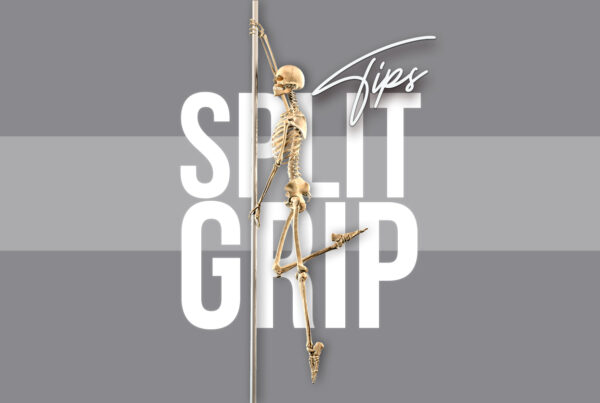Let’s talk about the ‘half flag’!
It’s the “easiest” version of the human flag (said with HEAVY quotation marks because the word ‘easy’ and ‘human flags’ should really never be uttered in the same sentence).
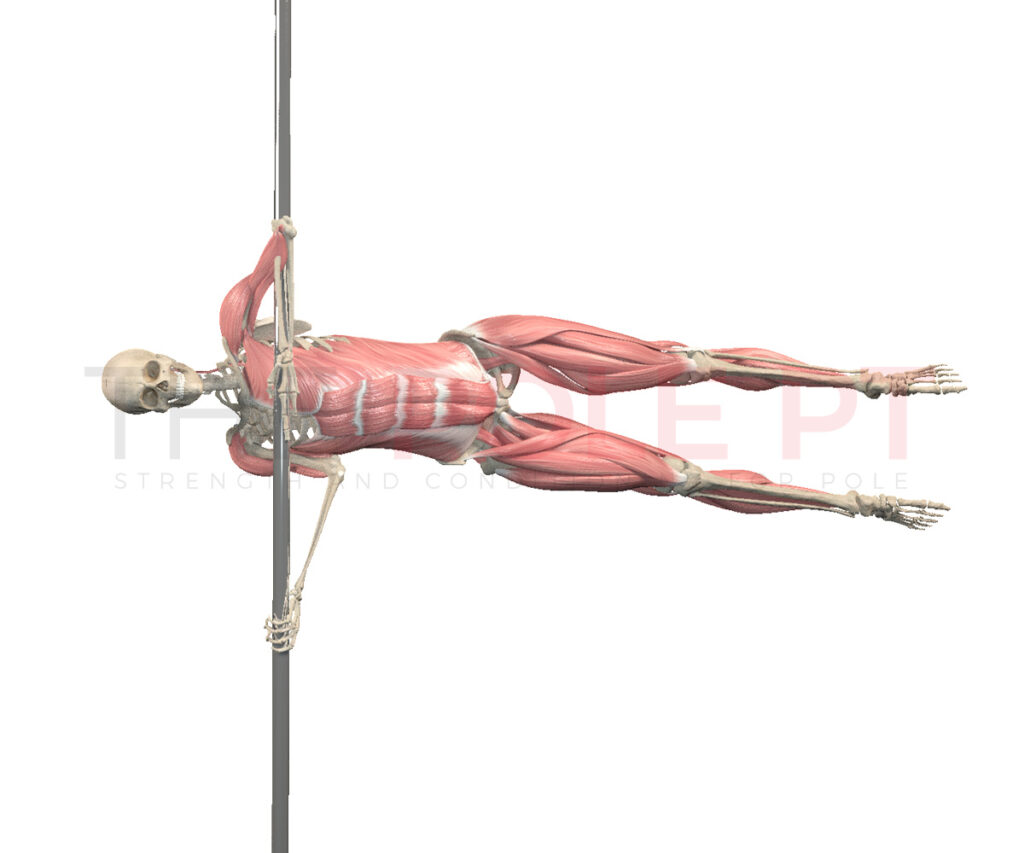
This grip position is usually referred to in pole dance as ‘flag grip’. It’s the gateway grip to next-level party tricks like full flags, fonjis and brass monkey deadlifts – and there are loads of cool shapes we can make using the flag grip as a base, while we work up to those more advanced tricks, too.
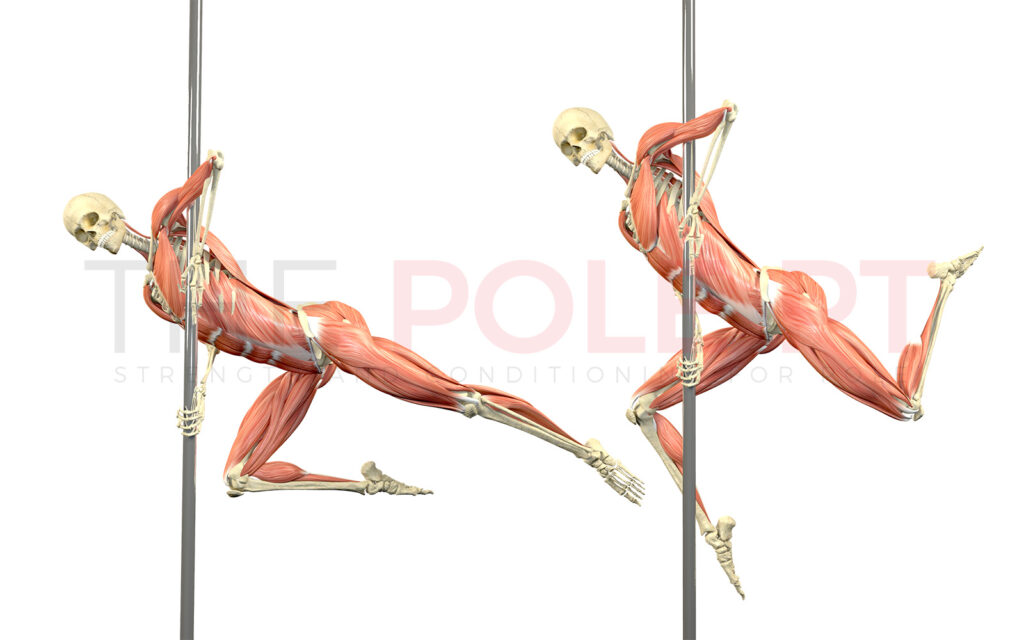
But what is it that makes the fully horizontal flag, with both legs straight, the most challenging shape of them all?
Rather watch than read? I made this <90 second video summary just for you!
Wanna read and digest that a little slower? Yeah, me too…
Defying gravity: the human flag
Obviously we need a lot of upper body strength to hold our bodyweight off the ground in any flag grip position and I’ll touch on that a little more below, but the real magic of the horizontal ‘half flag’ comes from our core strength.
That’s because gravity REALLY wants our body to go in this direction…
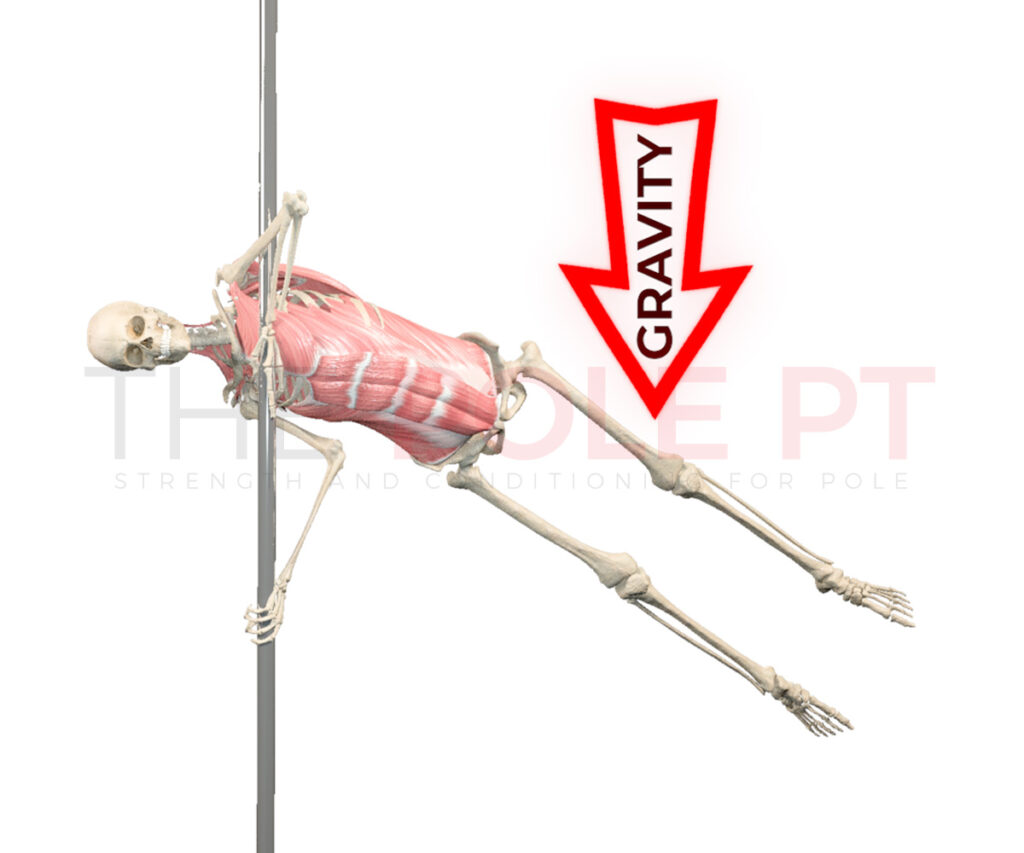
It’s our core muscles, particularly our external and internal obliques working along with our other lateral spinal flexors (including our psoas major, quadratus lumborum, erector spinae and multifidus) which are really working hard isometrically to resist that side bend and keep our pole flag flying high!
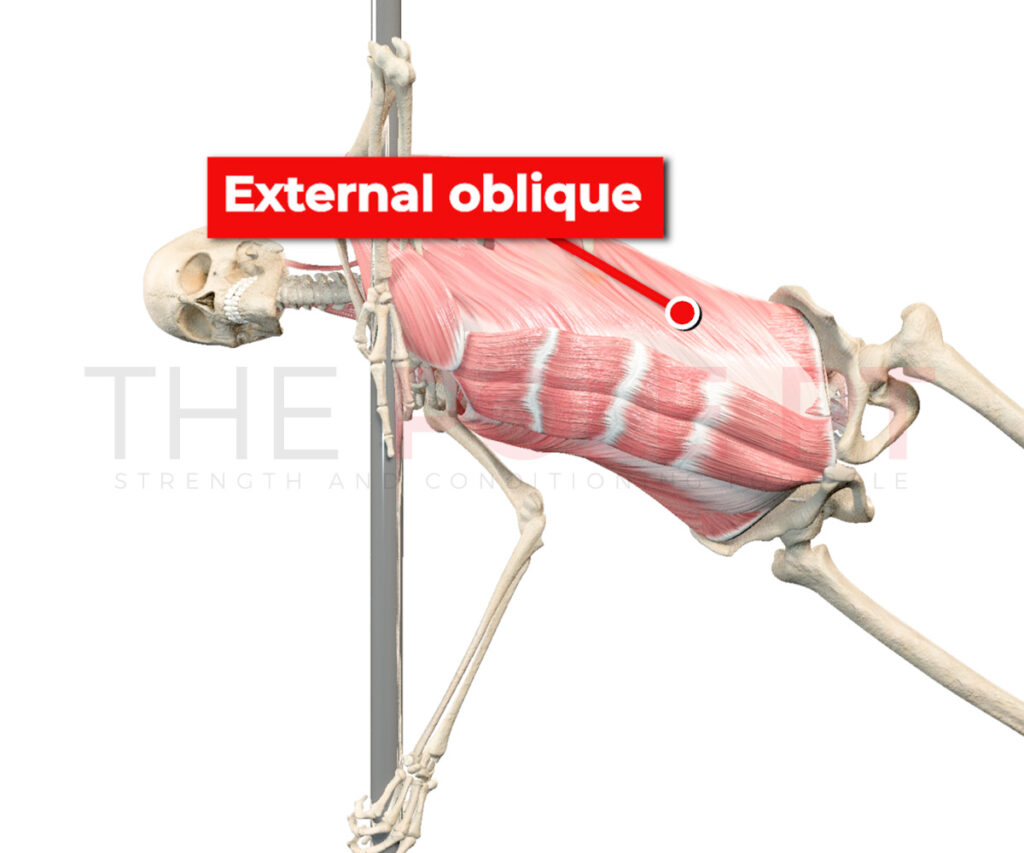
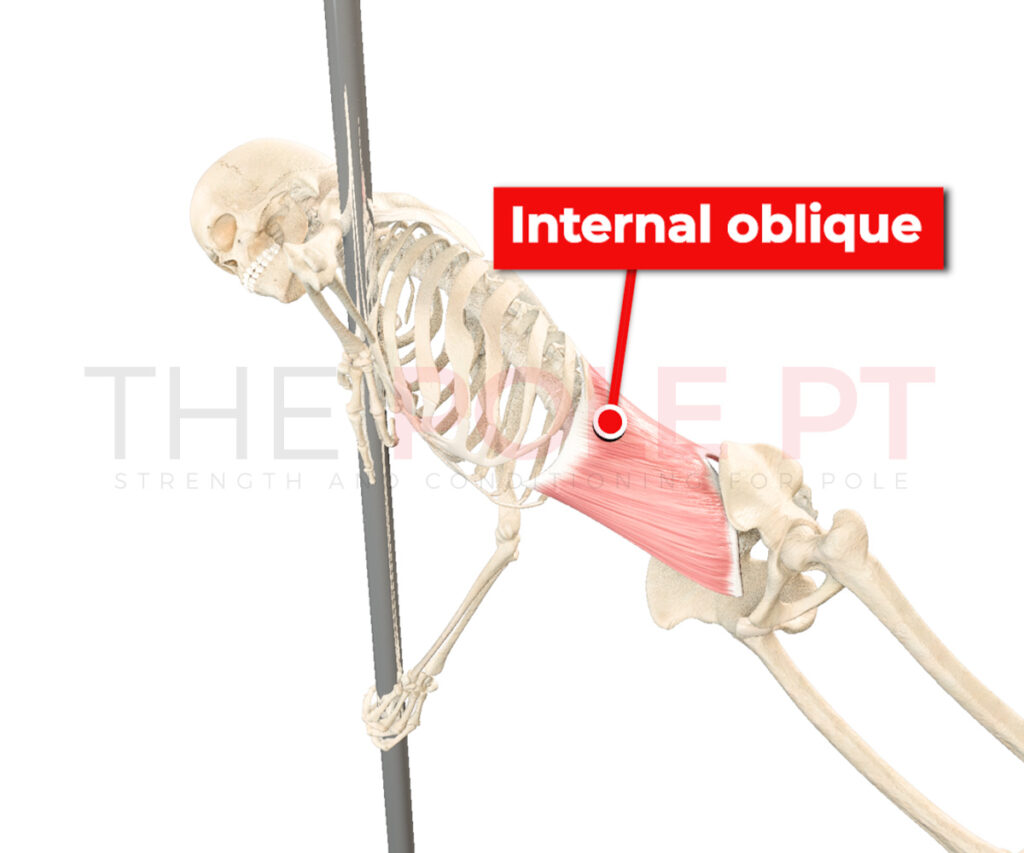
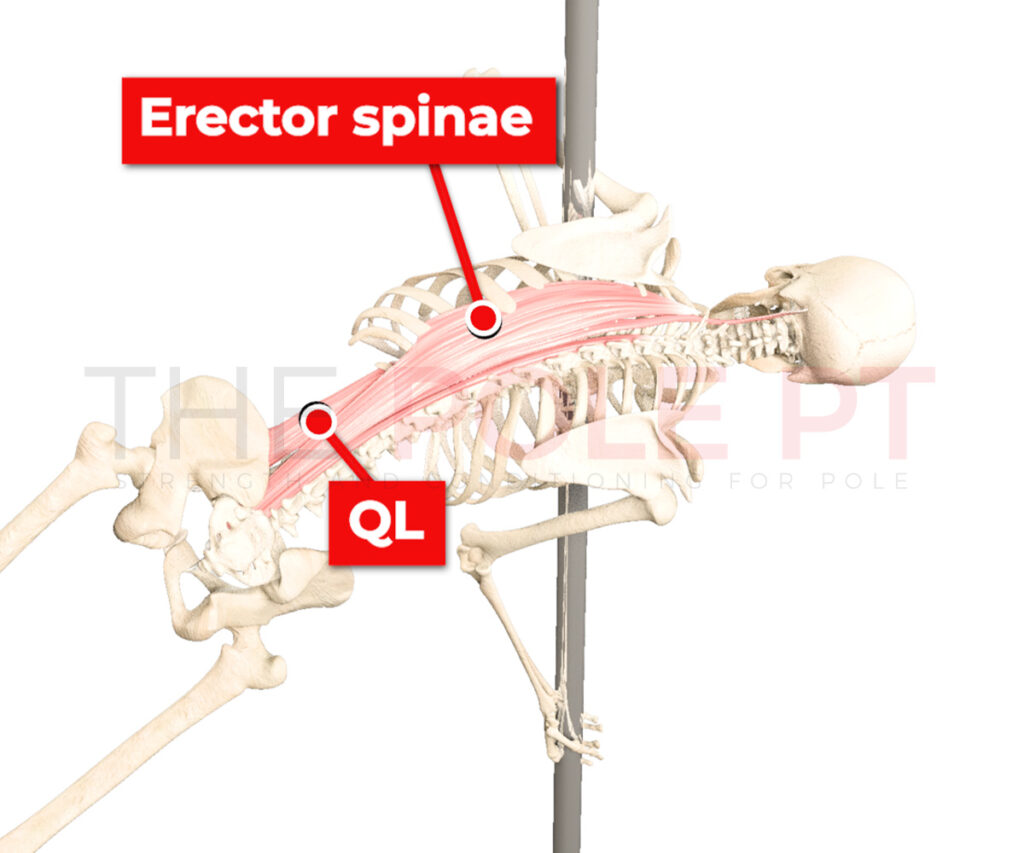
If we’re keeping our pelvis facing towards the audience, rather than facing more towards the floor, we’re also rotating and holding / resisting rotation, using you guessed it: our core muscles! Our primary spinal rotators are our external and internal obliques, rotatores and multifidus.
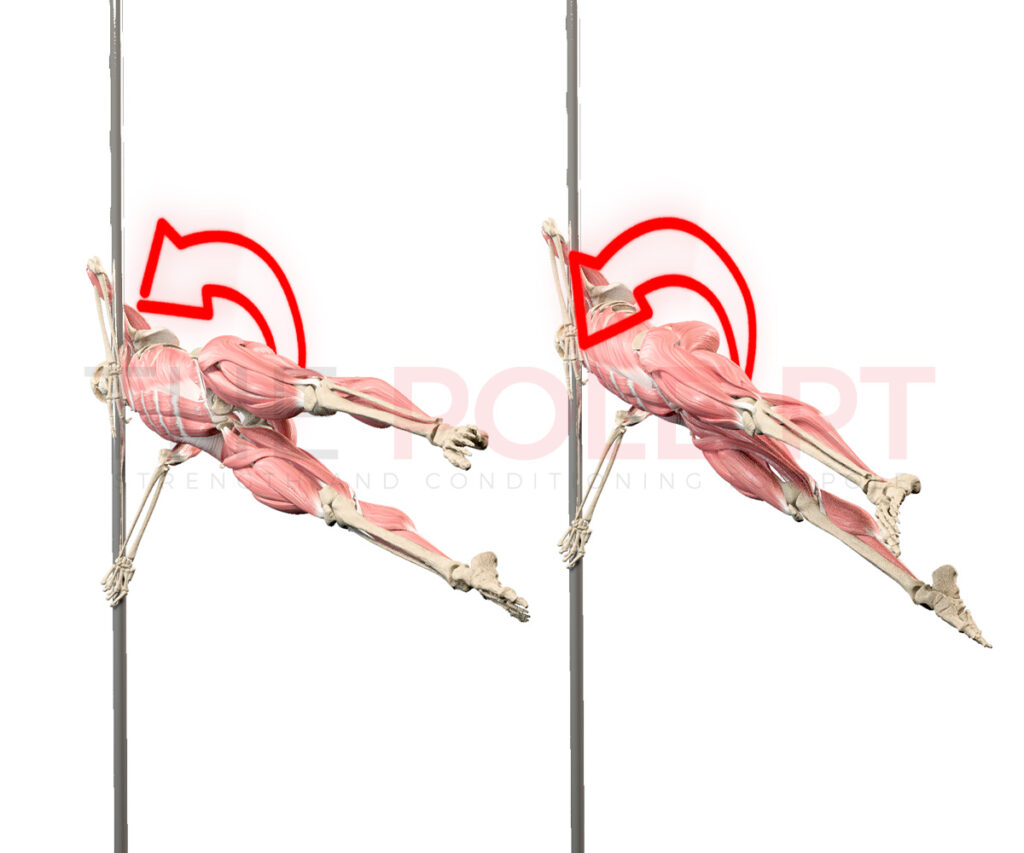
With both legs straight, we’re making life particularly hard for ourselves, because in comparison to the tucked position, or even the version with one leg straight, we’re increasing the load away from the stability of our grip point.
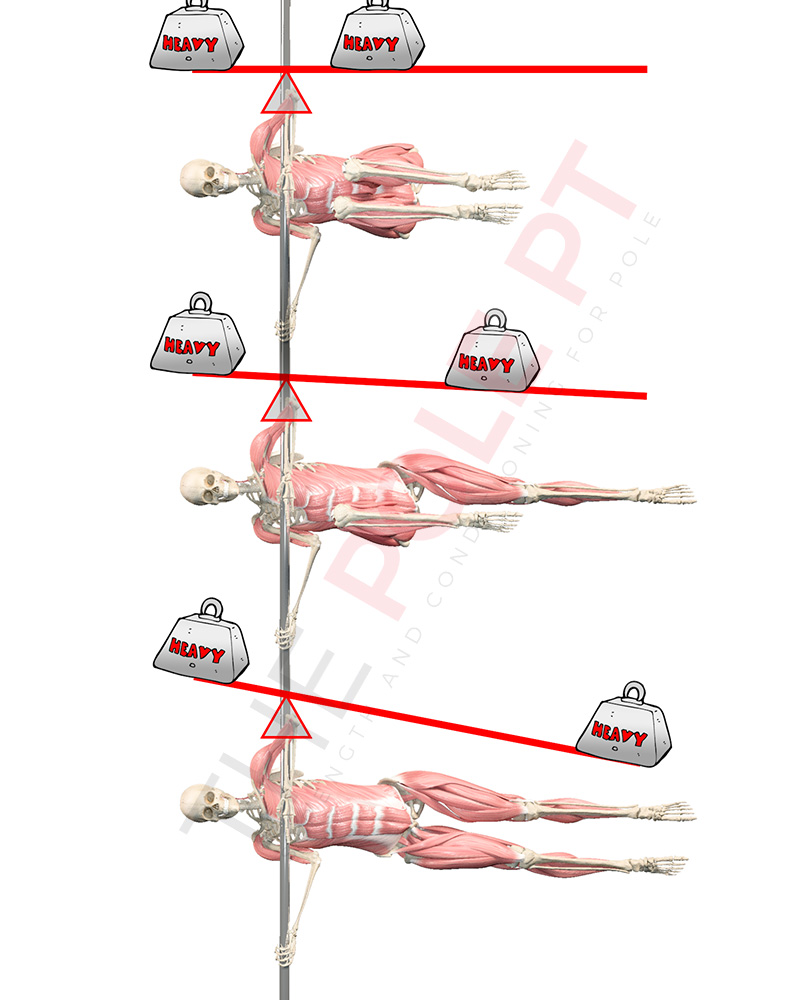
Ooo levers and physics!
Lower body strength in the human flag
While core strength is the meat and potatoes of this delicious human-flag pie we’re cooking up, it’d be nothing without a generous side serving of upper and lower body strength, too!
When it comes to our legs, although we’re keeping them together or in a fairly neutral(ish) position, that pesky ol’ gravity means that our leg muscles on the top side aren’t engaging in the same way as the bottom side.
The hip ABductors have to work harder on the top leg, whereas on the bottom leg it’s the hip ADductors which are working to keep the leg lifted in the air.
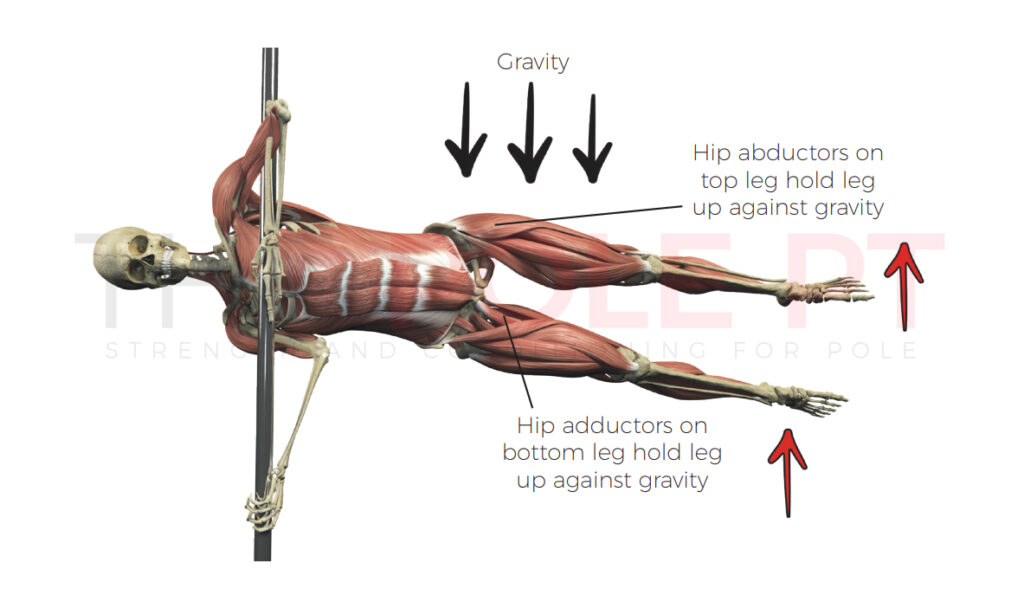
Upper body strength for flag grip
To hold the flag grip position, our top arm is internally rotated and the bottom arm is externally rotated. Of course our shoulder stabilisers are working hard to help stabilize our shoulders, but on the top arm, it’s the muscles that bring our arm towards adduction and shoulder extension that will be working hard to help maintain that flag grip position and help keep our torso lifted. In particular, our latissimus dorsi and pec major.
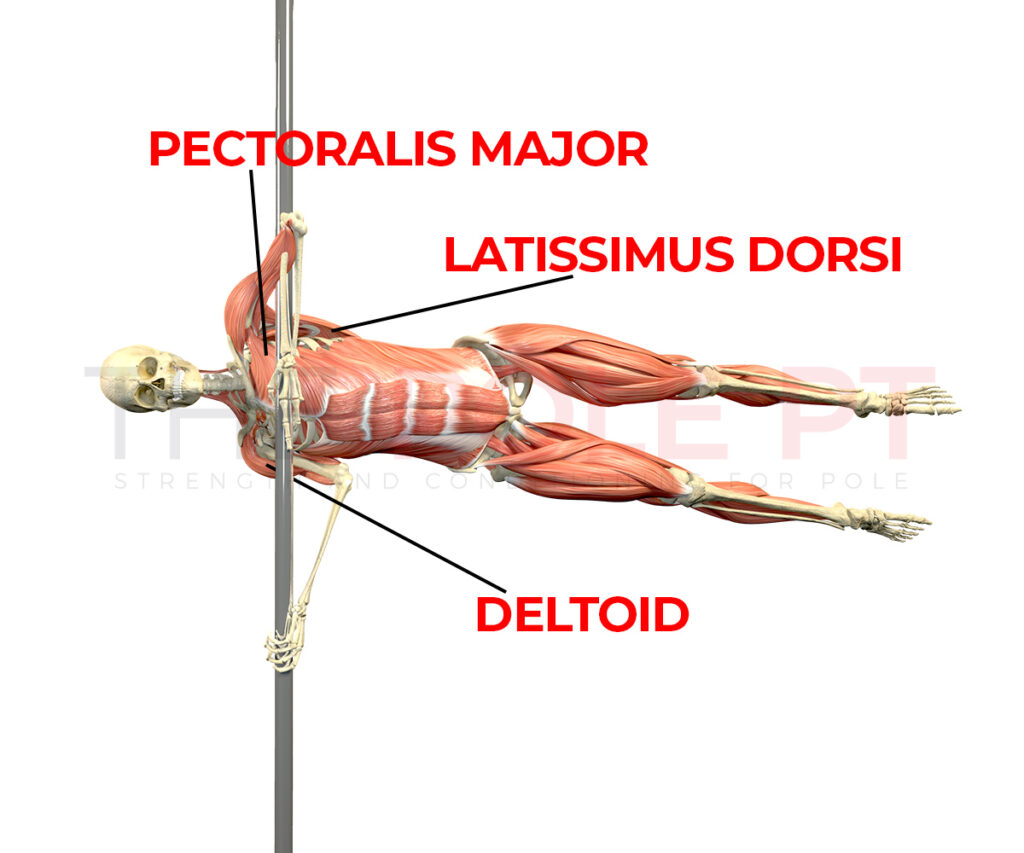
The bottom arm is pushing into the pole, with the biceps and triceps contracting isometrically to hold that bent arm position, with the deltoids resisting increased shoulder adduction.
Ready to start building strength for your flag?
Working on the different strength elements of the flag ‘off’ the pole, alongside your structured ‘on the pole’ progressions is a really effective way to build strength and get your flag flying high.
In my next post, I’ve shared some of my favourite off the pole core exercises for the flag, so if you’re working on your half flag and wondering where to start – come, let’s get to work!
>>Click here to head to the next blog post: Human flag: 3 x core exercises to conquer gravity!<<


